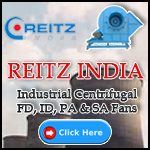A reactor is among the most crucial elements in many factories and plants, where chemical reactions are carried out every day. It is only after the proper completion of these reactions that the end product comes out. This article will briefly elaborate on a few of the major industrial reactors.
- Batch reactor: When we speak of the most commonly used reactors in the industry, a first mention needs to be made of a batch reactor. This reactor has an agitator enabling the blend of reactants with each other which causes the required chemical reaction. This reactor has cooling coils, as well, which are necessary for managing certain reactions.
The biggest benefit of batch reactors stems from the fact that they are compatible with a wide range of reactants. The reactor is of immense value in plants/factories manufacturing many varieties of products. Here, each product could require different reactants and divergent reactions.
- CSTR (Continuous Stirred Tank Reactor): A CSTR reactor is called a mixed flow reactor, too, which is an enclosed tank that includes an agitator. The agitator makes sure that the reactants get blended properly. Here, the reactants flow into the reactor at a specific pace, and they react for a specified period. Subsequently, the products exit at the same pace at which the reactants were initially introduced into the reactor.
CSTR supports the manufacture of a huge quantity of products. These reactors can be operated for several hours at a stretch, without any breaks. Continuous stirred tank reactors are widely present in the pharmaceutical sector and in facilities having processes like cell culture and fermentation.
- PFR (Plug Flow Reactor): A plug flow reactor is also known as CTR (continuous tubular reactor), as well. The reactants are sent inside the reactor in a fluid form, using a tube/pipe. As the reactants keep moving through the CTR, the concerned reaction progresses, yielding the desired outcome. Here, when the reactants are directed into a PFR, the flow rate is rather high. However, this rate declines when the products come out of the reactor.
An important benefit of using this reactor is that the rate of conversion is way higher than that seen in the case of a continuous reactor. Also, it’s worth noting that a plug flow reactor achieves that despite being smaller than a CSTR.
- Semibatch reactor: In a semibatch reactor we see the features of both a batch reactor and a continuous stirred tank reactor. Even the semi-batch reactor has an agitator to take care of the appropriate blending of reactants. This reactor works differently when compared with the above varieties. Here, a few reactants get charged at the beginning itself, and other reactants are steadily added to the reactor as the process goes on.
The semi-batch reactor is useful when the priority is to have more control over the output. Additionally, this reactor becomes pivotal when there is a possibility of some undesired side reactions or generation of extreme heat.
